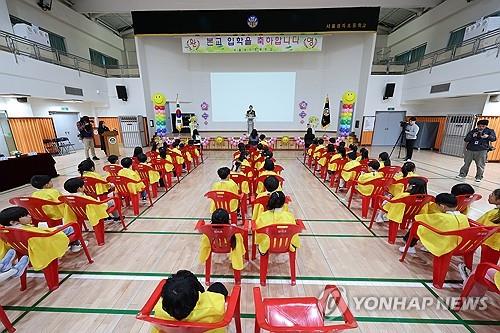- California Assembly OKs highest minimum wage in nation
- S. Korea unveils first graphic cigarette warnings
- US joins with South Korea, Japan in bid to deter North Korea
- LPGA golfer Chun In-gee finally back in action
- S. Korea won’t be top seed in final World Cup qualification round
- US men’s soccer misses 2nd straight Olympics
- US back on track in qualifying with 4-0 win over Guatemala
- High-intensity workout injuries spawn cottage industry
- CDC expands range of Zika mosquitoes into parts of Northeast
- Who knew? ‘The Walking Dead’ is helping families connect
S. Korea’s total population inches up in 2023 after 2 years of fall
South Korea’s total population rebounded in 2023 after two years of on-year fall on the back of the growing number of foreigners, though the country continued to experience falling birthrates and rapid aging, data showed Monday.
The country’s total population rose 0.2 percent, or 82,000, from a year earlier to 51.77 million as of Nov. 1, according to the 2023 census by Statistics Korea.
It marked the first on-year increase in three years. The country logged the first on-year population decline since 1949 in 2022, and the figure slid further by 0.1 percent the following year.
The total population is calculated based on childbirth and death data, as well as cross-border movements of foreigners residing in South Korea for more than three months.

Last year’s growth came as the number of foreign residents jumped 10.4 percent on-year, or 180,000, to 1.94 million, as more people arrived here from overseas for jobs and other purposes after the COVID-19 pandemic and the government’s extension of working visa programs, the agency said.
But the number of South Korean nationals fell 0.2 percent in 2023, the third consecutive yearly fall, to come to 49.84 million.
South Korea is struggling with demographic challenges, as many young people delay or give up on getting married or having babies due to the protracted economic slowdown, high housing prices and changing social norms about marriage.
The total fertility rate, which means the average number of expected births from a woman in her lifetime, hit a record low of 0.72 in 2023.
The working-age population, or people aged 15-64, fell by 140,000 to come to 36.54 million in 2023.
They accounted for 70.6 percent of the total, and the proportion has been on a constant decrease since 2018.
The number of South Koreans aged 65 and older rose 5 percent on-year to 9.49 million in 2023.
The age group accounted for 18.6 percent of the total population last year, up from 17.7 percent a year earlier.
Of them, 22.5 percent lived alone.
The senior index, which represents the number of those aged 65 and above per 100 people aged 14 and below, came to 171, up sharply from 113.9 in 2018.
The number of single-member households climbed 4.4 percent on-year to 7.82 million, and their proportion of the total households reached a record high of 35.5 percent, the data showed.
The number of people residing in Seoul came to 9.39 million, which took up 18.1 percent of the total, and those living in the surrounding Gyeonggi Province stood at 13.82 million, or 26.7 percent, the data showed.











